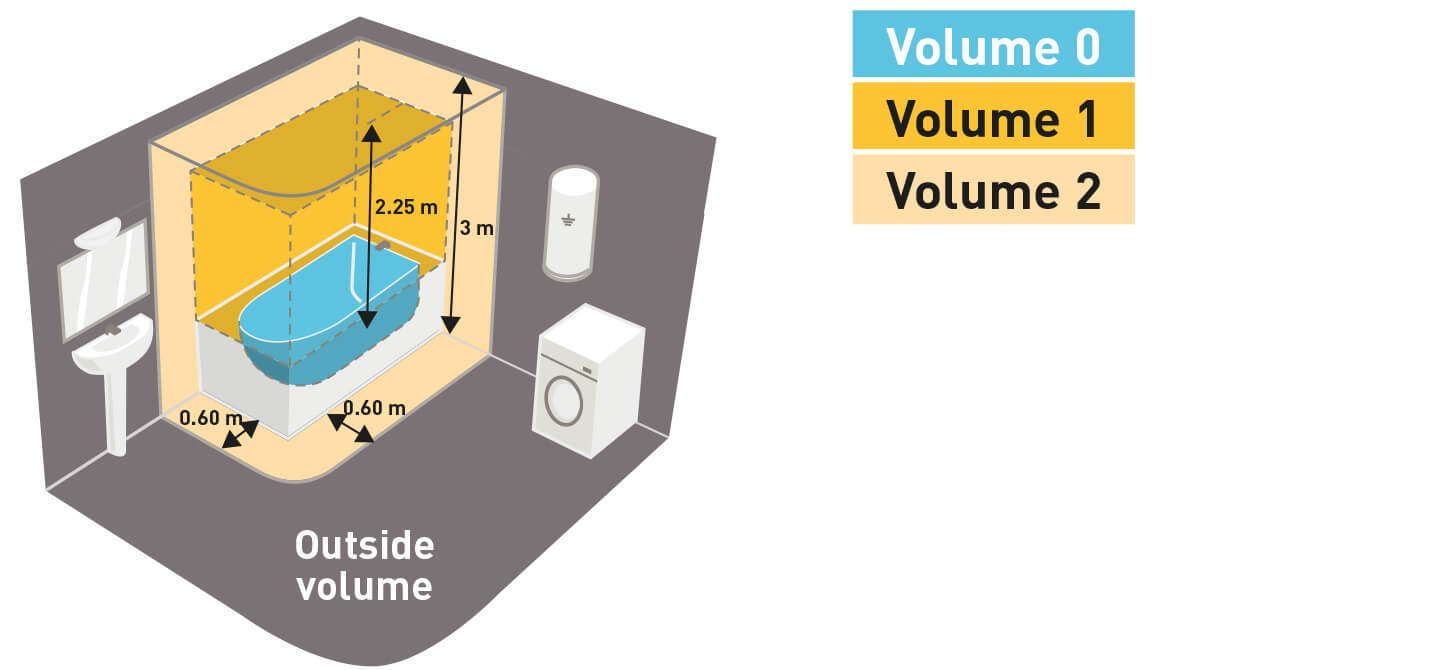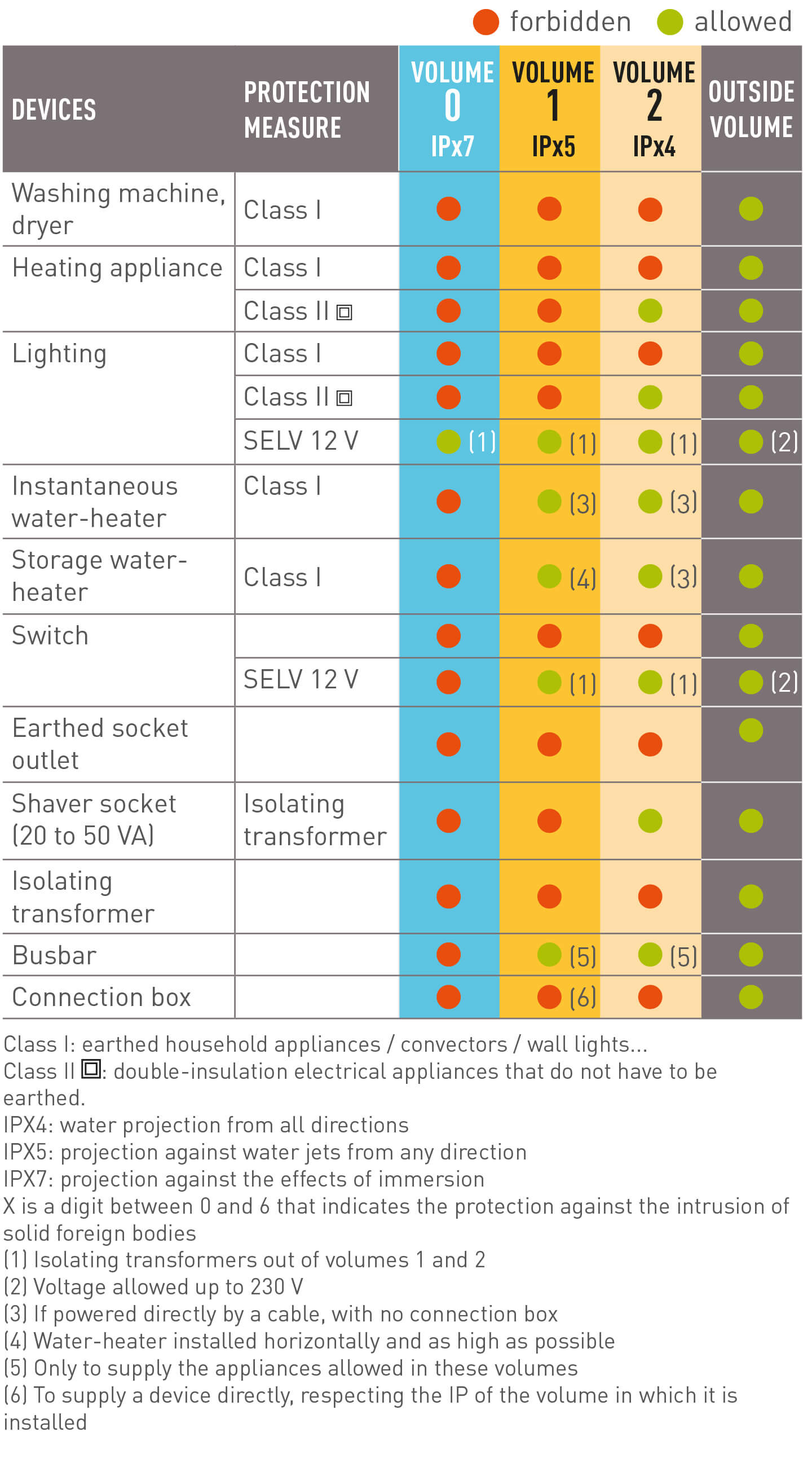What are the best electrical practices in humid areas?
Electricity and water have never been compatible, and the design of an electrical installation in wet rooms, such as a bathroom, requires particular caution because they are more exposed to risks than other rooms in the home. The NF C 15 - 100 standard provides recommendations on this subject.
Protection Volumes: a Concern for Safety
For the bathroom, the NF C 15 - 100 standard distinguishes different types of volume, each corresponding to a level of exposure:
- Volume 0: this is the area where water is received (bath or shower). No electrical equipment is allowed in this area.
- Volume 1: it is constituted by the zone in which the water is projected around volume 0, delimited by the edges of the shower tray and/ or by a height of 2,25 meter.
- Volume 2: it corresponds to a safety zone around the shower tray, on a distance of 60 centimeter beyond volume 1.
The hidden volume: it is the space under the bathtub or the shower tray. No electrical equipment is allowed here (except for Ingress Protection 4 products protected by a 30 milliampere differential switch, such as a whirlpool motor).
The rest of the bathroom is considered "Out of Volume".
Note: only fixed and permanent walls joined to the floor limit the volumes.
Volumes 0, 1 and 2

Volume 0: case of walk in showers (without shower tray)

Hidden volume

Which Equipment in Which Volume(s)?
The volumes defined by the NF C 15 - 100 standard determine the installation of electrical circuits and devices according to their protection measure.
Please note: the NF C 15 - 100 standard requires that all electrical circuits supplying a bathroom be protected by a 30 milliampere differential switch. In order for this switch to play its protective role, the pipes, metal masses and lighting in the bathroom must be connected to the ground.

 TUNISIA
TUNISIA
 ALGERIA
ALGERIA
 CENTRAL AFRICAN REPUBLIC
CENTRAL AFRICAN REPUBLIC
 EGYPT
EGYPT
 KENYA
KENYA
 MOROCCO
MOROCCO
 NIGERIA
NIGERIA
 SOUTH AFRICA
SOUTH AFRICA
 ARGENTINA
ARGENTINA
 BRAZIL
BRAZIL
 CHILE
CHILE
 COLOMBIA
COLOMBIA
 PERU
PERU
 CANADA
CANADA
 USA
USA
 BAHRAIN
BAHRAIN
 IRAQ
IRAQ
 JORDAN
JORDAN
 KUWAIT
KUWAIT
 LEBANON
LEBANON
 OMAN
OMAN
 PAKISTAN
PAKISTAN
 QATAR
QATAR
 SAUDI ARABIA
SAUDI ARABIA
 UNITED ARAB EMIRATES
UNITED ARAB EMIRATES
 RUSSIA
RUSSIA
 BELGIUM
BELGIUM
 CYPRUS
CYPRUS
 DENMARK
DENMARK
 FRANCE
FRANCE
 ITALY
ITALY
 NETHERLAND
NETHERLAND
 TURKEY
TURKEY
 UK
UK
 AUSTRALIA
AUSTRALIA
 NEW ZEALAND
NEW ZEALAND
 PAPUA NEW GUINEA
PAPUA NEW GUINEA
 TONGA
TONGA